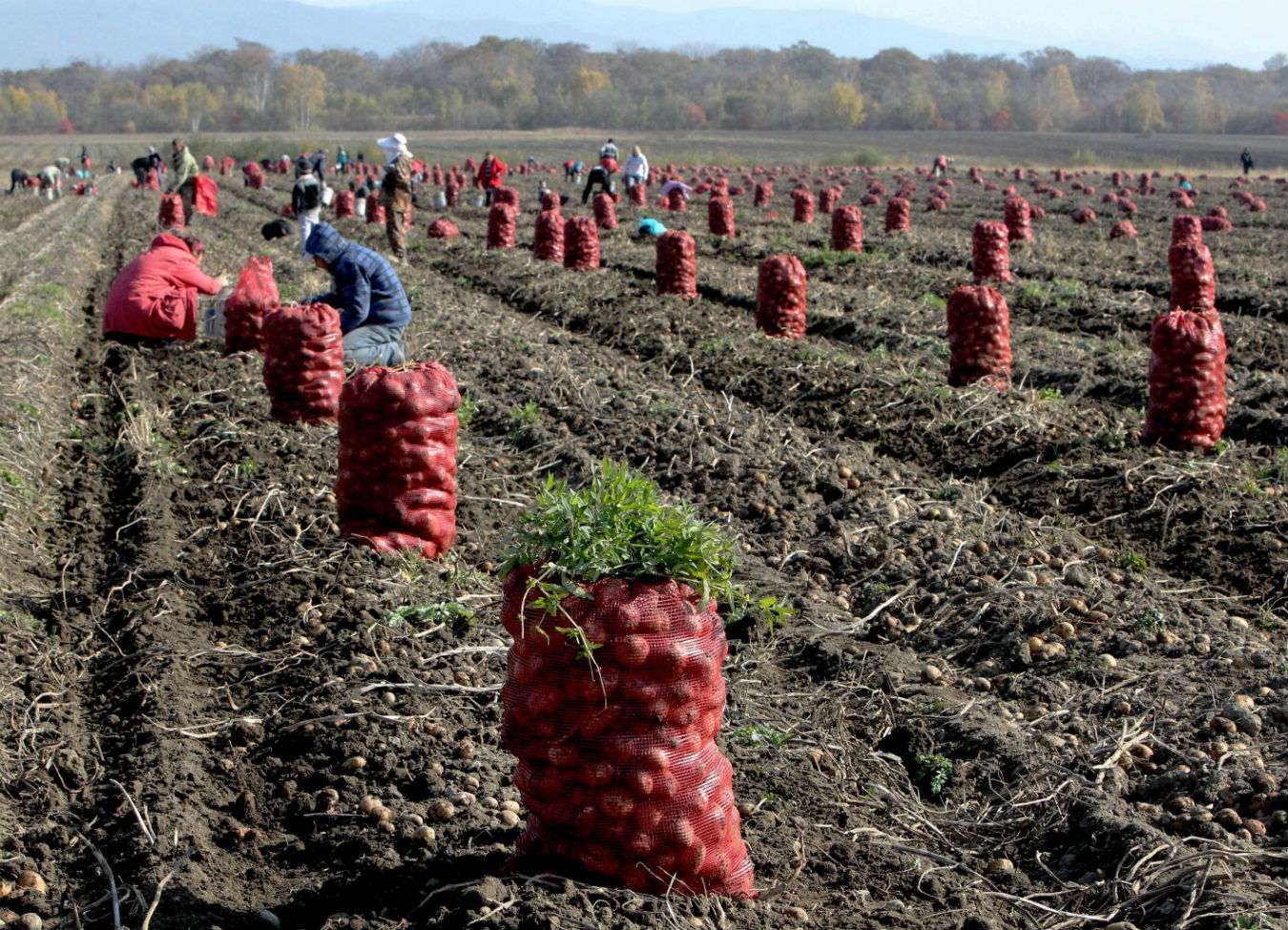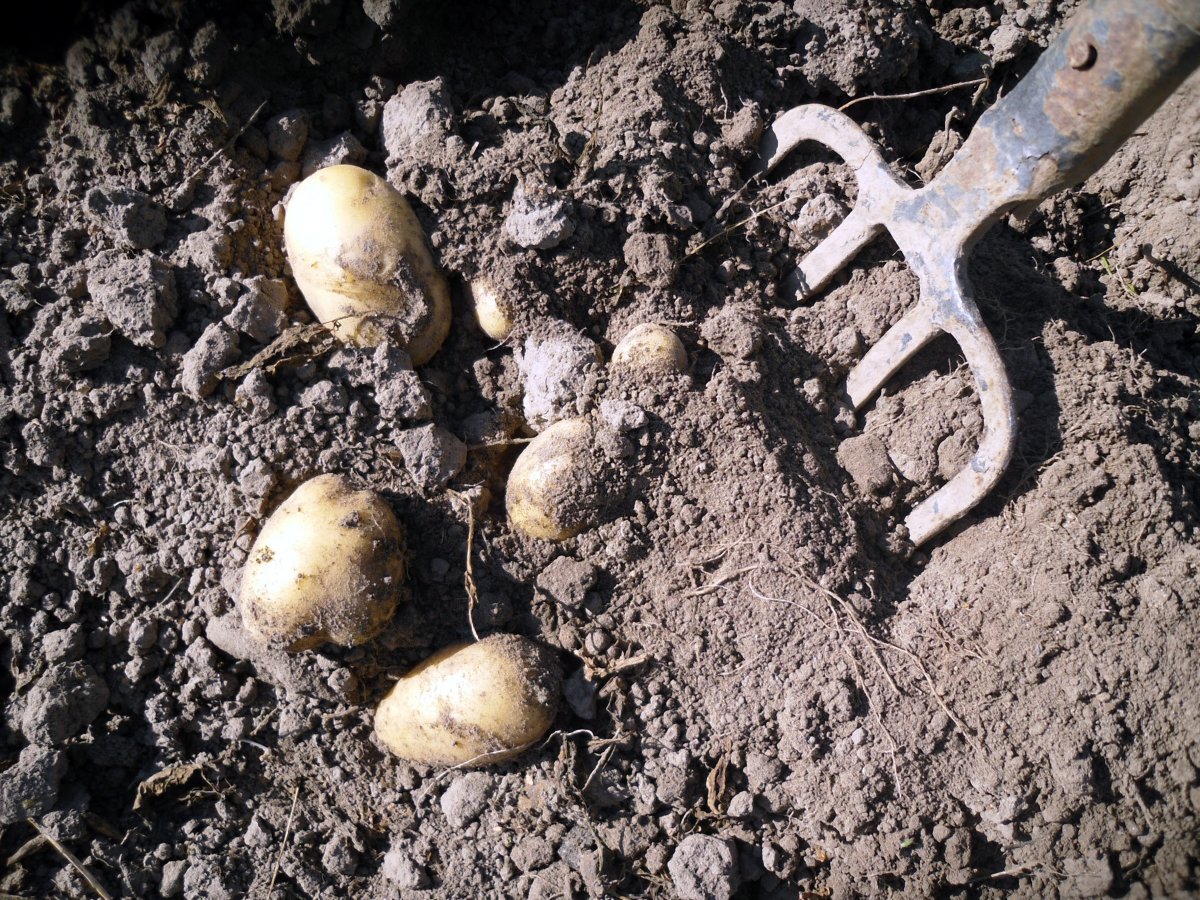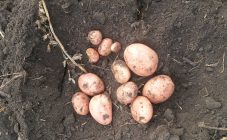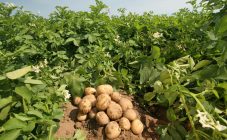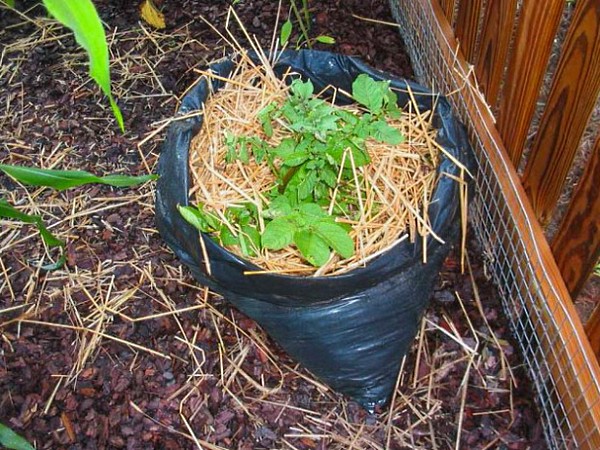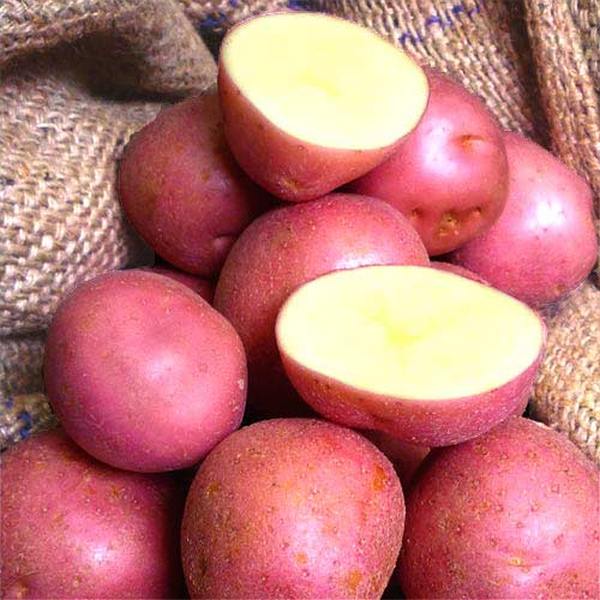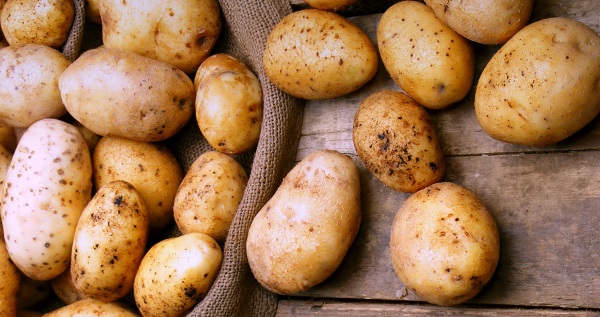Content:
Collecting potatoes is the final stage of growing a crop. Proper cleaning - cleaning wisely. Therefore, digging up a crop of nutritious tubers must be approached with reverence. Only proper cleaning and storage will help you survive the winter cold with excellent potatoes.
Potato harvest time
Potatoes should be harvested in a timely manner. Otherwise, the tubers may start to deteriorate, rot, becoming unusable. Digging up the potatoes too early, there is a risk of damage to the tubers, since the fruits do not yet have a dense skin that can protect them from external influences. These potatoes do not store well. If you dig late, there is a chance of tuber growth. Sprouts will begin to appear, into which the bulk of the beneficial properties will pass. Overripe potatoes are poorly stored and lose some of their taste.
Taking into account the average statistical data on the collection of potatoes, the main dates fall on the end of summer and mid-September. Harvesting time is also influenced by the variety of potatoes and the weather conditions in a particular area.
The time for harvesting potatoes must be chosen correctly: a sunny day, no rain. In the case when, according to the weather forecast, a rainy period is promised, it is necessary, without delay, to collect the tubers. It is important to study the lunar calendar in advance in order to know favorable days for harvesting potatoes.
Be sure to take into account the variety of culture, the characteristic features of ripening. An early maturing variety is enough for full formation of 1.5 months. For the mid-season, the period increases to 100 days. As for the late varieties, they need much more time - 4 months.
The total amount of seasonal rainfall affects the ripening period of potatoes. With dry summer, the fruits ripen faster, respectively, and they need to be harvested earlier. As a rule, the fruits that have appeared in such weather conditions are small in size. Taste quality is poor.
Signs of potato ripeness
It is possible to determine the readiness of the crop not only by timing. There are several external signs of the culture itself, by which it is immediately clear that it is time to harvest potatoes.
The first clear sign is wilted, dry tops. Everything is simple here: if the greens begin to dry out, then there is no point in leaving the fruits in the ground longer. You need to harvest the crop within two to three weeks. Otherwise, the potatoes will overripe and the process of decay may begin.
Still have doubts about the maturity of the crop? Dig up some bushes to test. Take two large fruits and rub them together. If the peel remains intact, then you can safely harvest.
Than dig potatoes
Shovel
All gardeners know how to dig out potatoes with a shovel, but it is not always clear how to choose the right equipment for work.
The potato shovel is the simplest and sturdiest tool. It is recommended to keep a couple of them in stock in case one breaks. This avoids downtime during harvesting. Avoid buying a solid metal potato shovel. It is better to choose with gaps and slots in the body. It will be much easier to dig up the beds with such a tool.
The potato shovel has its drawbacks. She often spoils the dug up tubers, makes cuts on them. The quality of the soil should also be taken into account. For example, if the soil is clay, then a shovel is not the best tool.
Pitchfork
Another commonly used potato harvesting tool. It is also better to purchase several of them at once. It is worth choosing with 4 or 5 teeth. This will reduce the risk of damaging the tubers. Be very careful when using a pitchfork. They are so sharp they can pierce rubber boots.
In general, digging potatoes with a shovel and a pitchfork is not very different. There are already individual preferences. Someone is more convenient to work with a pitchfork, while others use only a shovel.
During the digging process, you need to stand with your back to the sun so that it does not shine in your eyes. To dress so that all parts of the body are tightly covered from the sun's rays, you need to cover your head. Many people use hats with large brims. It is also necessary to treat clothes with mosquito repellent and other insects. Be sure to wear boots. To some, they may seem heavy, but the legs are safe and the risk of injury from equipment is minimized. It is necessary to work carefully and carefully.
Cultivator
Few know how to dig potatoes with a walk-behind tractor or cultivator. These two units belong to modern technology. They were created for those whose financial capabilities allow purchasing such devices. Before you start harvesting, you need to learn how to operate the equipment.
It is good to use the cultivator on land with an area of 1 hectare. A smaller area can be dug manually. Three active people are enough. Before using the cultivator for harvesting, you need to remove all the tops in advance and additionally dig out the bushes infected with late blight by hand. It is worth waiting a couple of days for all the grass to settle down without interfering with the work of the cultivator.
Regarding the weather, the conditions are the same as for manual harvesting. The whole "team" will have to choose potatoes at the end of loosening each row with a digger, although this can be done after the entire plot has been processed.
Work can be a joy when you consider all the preparatory work. For digging potatoes with a Neva or Oko motor-cultivator, you must study the instructions for using the technique. For this, it is worth preparing the site in advance. It is worth aligning all the beds in advance so that the cultivator does not have to deviate to the sides. The gap between them must be the same size. In the process of using the technique, attachments made specifically for harvesting are used. The turnover rate of the knots must be adjusted so that they must harvest the tubers without throwing them away.
The "pluses" of the cultivator include the fact that it digs out absolutely all tubers, practically does not damage them, makes work easier and speeds up the harvesting process. At the same time, as well as with manual collection, a couple of people can follow the "driver" of the product, sorting the tubers. This can be done at the end of all the work.
Seed selection and crop conservation
After all the potatoes have been dug up, dry them well before storing them. This can be done on a sunny, warm day. Presence of wind is desirable. In no case should potatoes be poured into a lighted, open place: a poisonous substance - solanine - may accumulate in it. The best option is to pour the tubers under a canopy, from the south.
It is recommended to dry the potatoes in groups.It will take no more than 4-6 hours to dry one batch. In the process, it is necessary to turn the tubers on the other side so that the potatoes are well dried on all sides. Further, in groups, the crop must be taken to the bin. The depth of the room is standard - two, three meters. The walls should be whitewashed, it is advisable to renew the whitewash every year. It is necessary to store the product in ordinary wooden boxes, new and dry. Pour the tubers carefully so as not to damage them.
Each batch of potatoes needs sorting. There should be open access to all groups in order to check the condition of the fruit if necessary. The required storage temperature for tubers is + 2-3 degrees, and the humidity level is 85-90%.
After putting the potatoes in storage, you need to carefully examine the site: the remaining weeds, tops can be used to create compost. Only healthy tops and dry plants without seeds will do. Unhealthy tops are burned.
Growing a crop is half the battle. It is equally important to collect it in a timely manner and place it for storage. It is worth listening to the recommendations of experienced gardeners. This will help you get a good harvest and keep the potatoes safe and sound.
